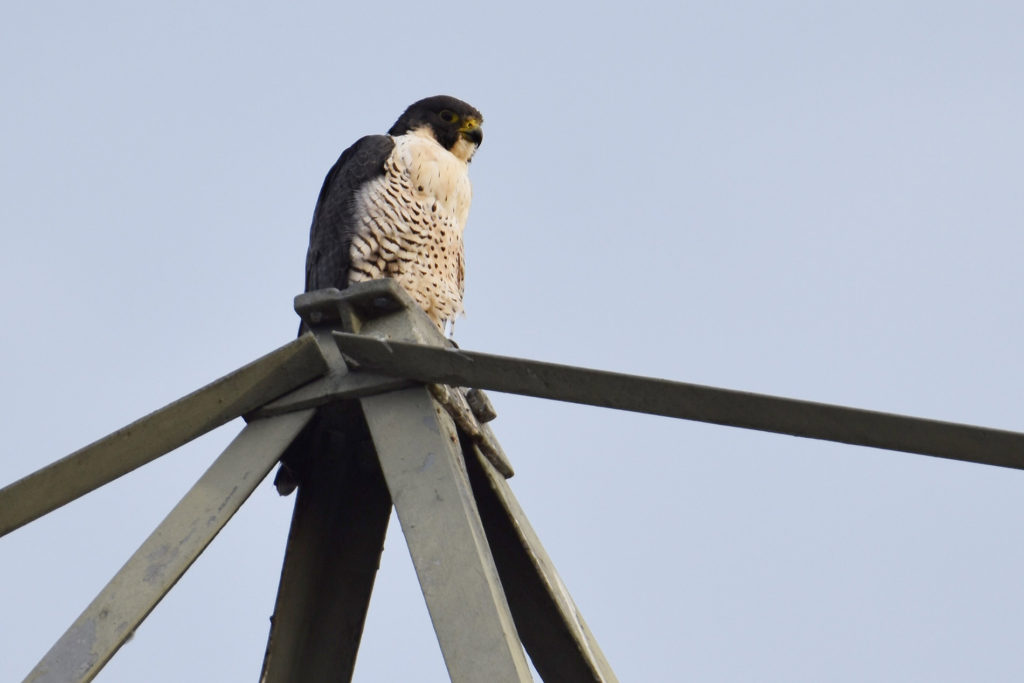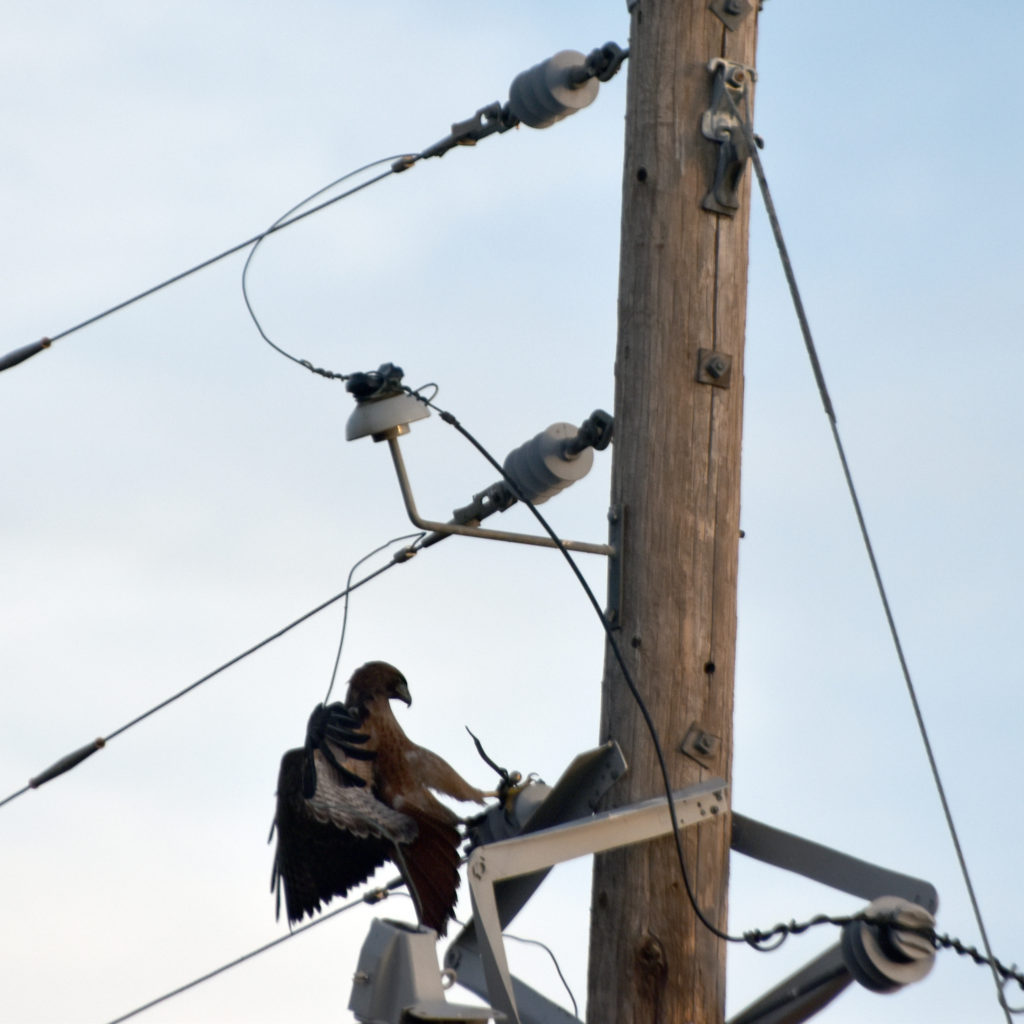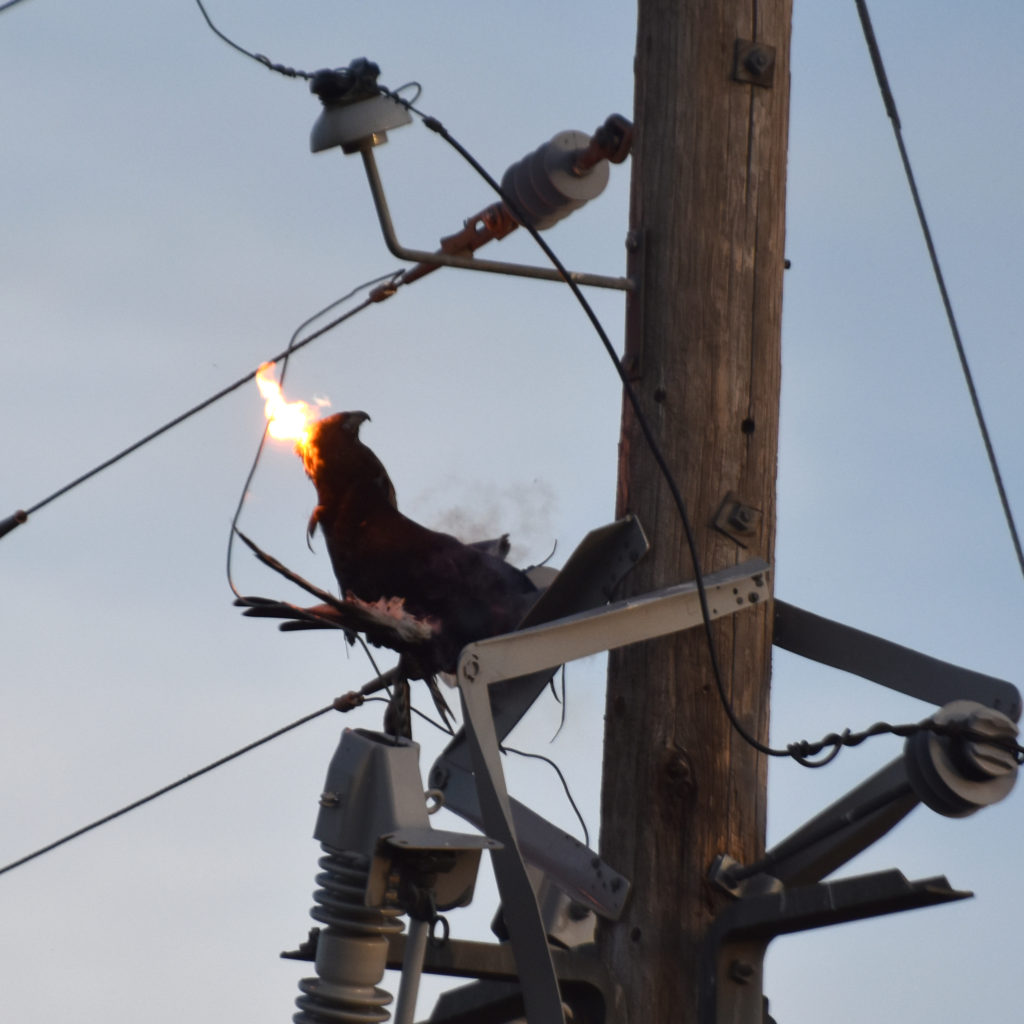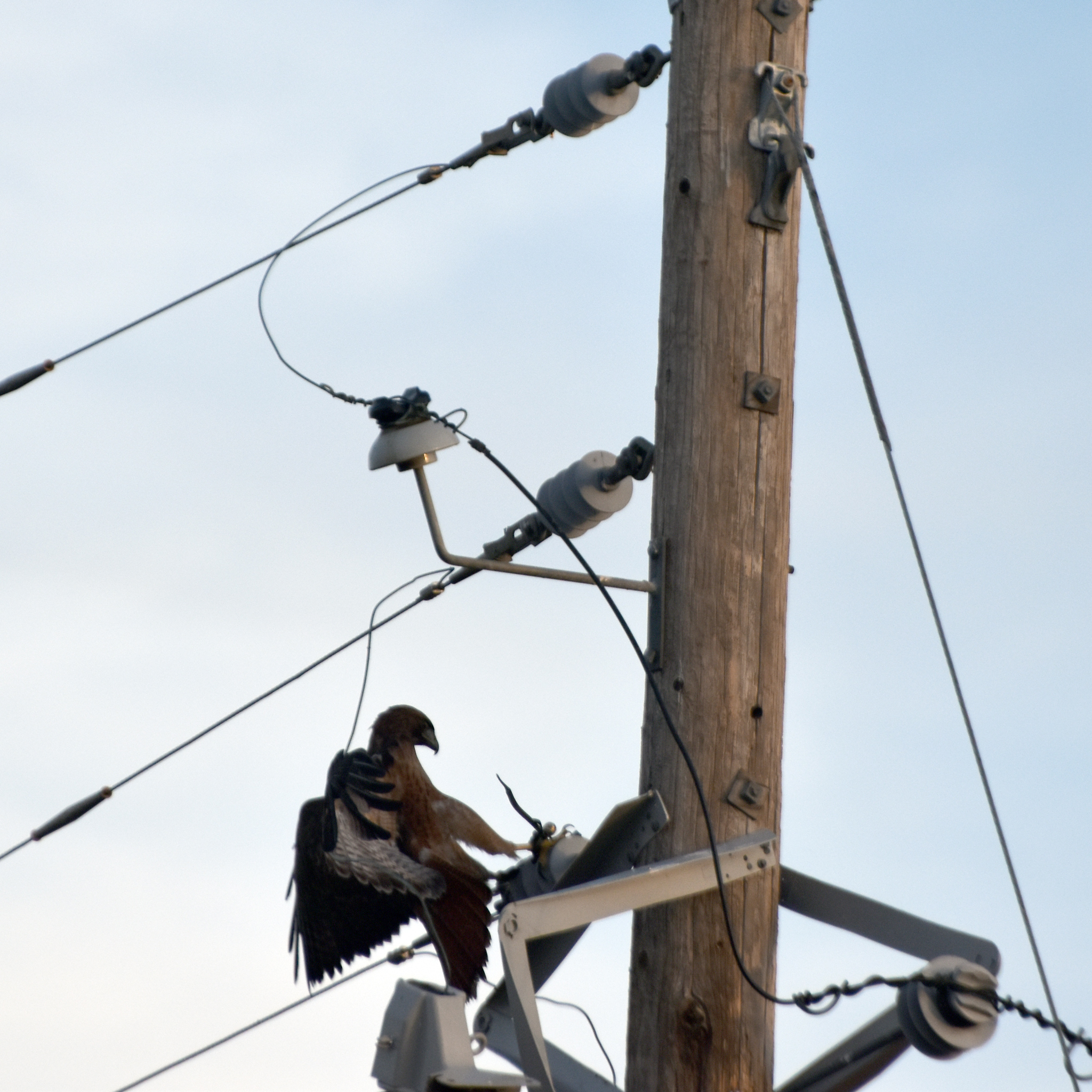You, as a falconer has come across all sorts of obstacles when hunting in a field. Your hawk has perched on all sorts of things that will give it a height advantage to survey a field for game. Most of the time the hawk will perch on trees, lamp posts, buildings, or the T-perch you carry to give your bird a better view as you move through the field.

Sometimes the perch is a power pole. In California, Pacific Gas and Electric (PG&E) are required to make it difficult for birds of prey to get electrocuted with their “Bird-Safe Poles“. However, not all are completely safe.
It is said that red-tailed hawks are more abundant in modern times because of man-made utility poles. Giving hawks a place to perch with an unobstructed view of hunting fields. Before man-made poles, hawks were limited to tree snags or other natural perches. Power poles, lines, and transformers still pose a significant threat to eagles, hawks, falcons and other birds.

Not all are safe and it is up to the falconer to recognize unsafe power poles before our birds perch on them. This is easier said than done. There are lots of dangers to look out for when hunting in the field, this is just another one.

If you talk to enough falconers, you will find electrocution is an all too common. Stay safe out there. ??

